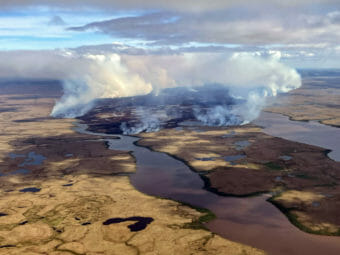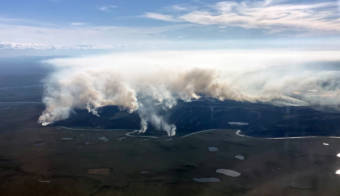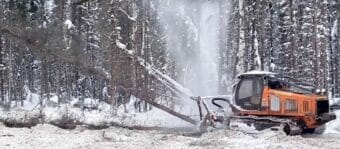
The cool, rainy weather that set in last week over much of Alaska has dampened this year’s fire season, which was shaping up to be one of the worst in recorded history. State and federal agencies are sending some crews home, but officials warn that the fires could come roaring back after a day or two of dry, warm weather.
Hot and dry weather earlier this summer created the perfect conditions for the wildfires that have burned nearly 3 million acres in Alaska this year, making it the sixth-worst fire season on record. In response, agencies have mobilized 2,000 firefighters from around the state and Outside. And they were about to raise the state’s fire-preparedness rating to its highest level.
“We’re at four now,” state Forestry Division spokesperson Sam Harrell said. “Five is the top. Last week and the week before, we were planning level five.”
Harrell says all of that changed over the past week or so after thunderstorms that had been spawning dry lightning finally began to produce rain.
“Tomorrow morning, Alaska will be dropping to a preparedness level of three,” he said.
In response to the change in weather, officials reduced the fire danger level in many areas and lifted the statewide emergency burn ban.
Harrell says some of the elite fire incident management teams brought up from the states are preparing to pack up and head home.
“Fire season is picking up in the Lower 48, and there is a demand for resources,” he said. “Once they’re done with their assignment in Alaska, we are demobilizing them back to the Lower 48, or back to Canada, depending on where they’ve come from.”
That’s what happening with the Lime Complex, a series of 18 wildfires that have burned more than 865,000 acres in southwest Alaska. Harrell says forestry officials also hope to soon take over management of the 38,000-acre Minto Lakes Fire, northwest of Fairbanks.
He says management of the 61,000-acre Middle Tanana Complex fires, burning between Salcha and Delta Junction, also is downsizing.
“The fires aren’t growing anymore, and so the management team there has moved to a smaller group, from a type 2 incident management team to a type 3,” Harrell said.
The cool weather has slowed the 72,000 acre Clear Fire that’s burning west of Anderson. And Harrell says fire officials there want to take the opportunity to limit the fire’s growth.
“They’re still dealing with some active portions of line on that fire. And as crews are not needed on some of these other fires, we’re rerouting them to Clear,” he said.
Harrell says fire officials remain cautious because they know it’s possible that hot and dry weather could return. He says that’s happened in past fire seasons that look a lot like this one.
“In our previous large-acreage years, that’s how those summers played-out. We would have our typical lull this time of year, only to have it dry out in August and September,” he said.
Harrell says the fire season is only half over, and the Forestry Division will keep busy suppressing high priority wildfires well into the fall.



